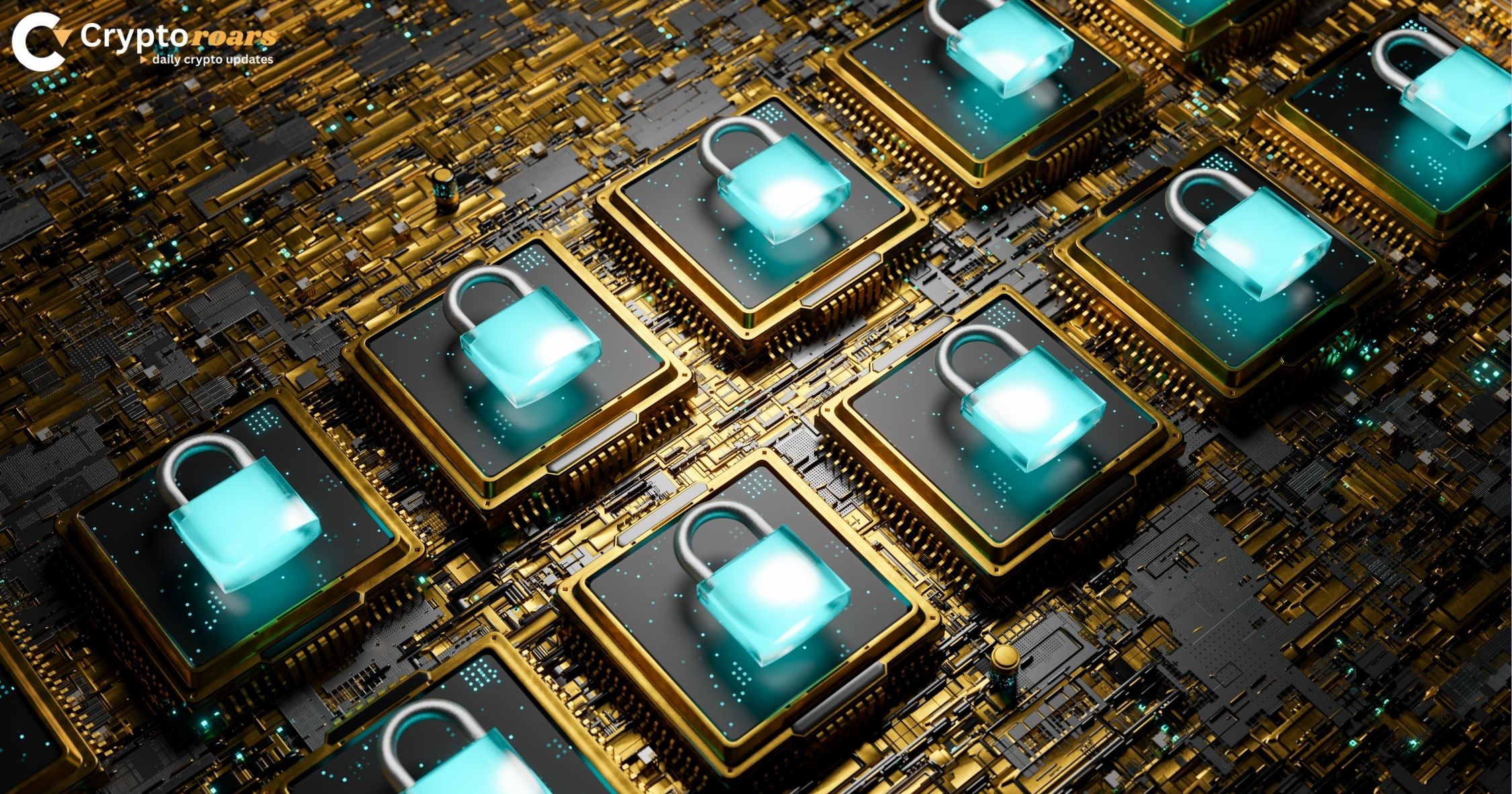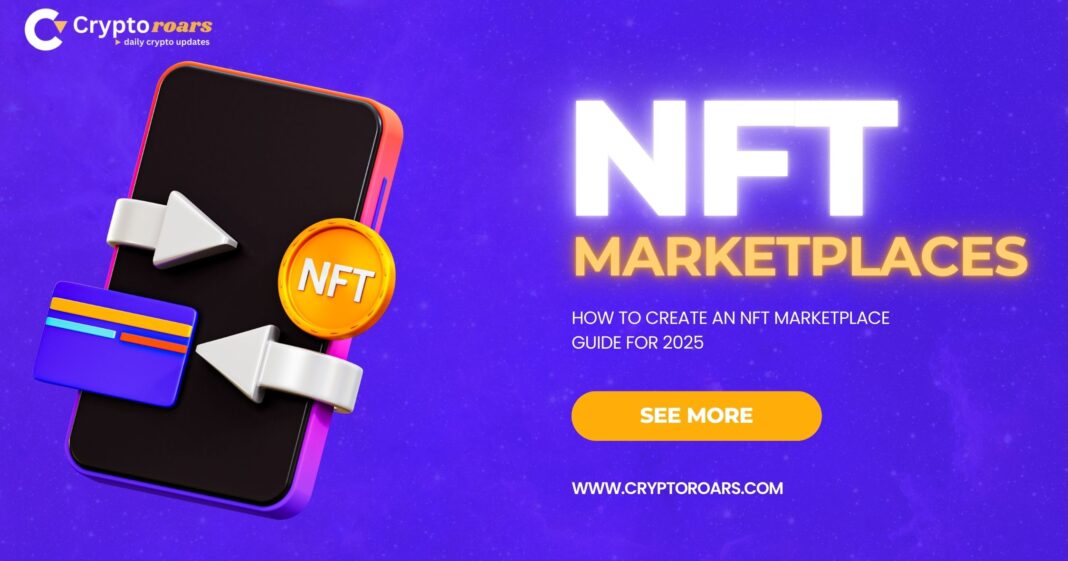The digital world keeps shifting, and one of the biggest shifts we’ve seen is the rise of the NFT Marketplace. People across the globe are trading non-fungible tokens every day. These tokens have changed how we think about digital ownership, virtual assets marketplace, and even the future of decentralized finance (DeFi). In 2025, the NFT industry looks stronger than ever, attracting artists, gamers, collectors, and tech builders. This guide will take you deep into the world of NFTs, teaching you how they work, why they matter, and most importantly, how you can create your own marketplace in the USA.
The NFT movement is no longer just a trend. It is a living, breathing NFT ecosystem powered by smart contracts, NFT wallets (MetaMask, Coinbase Wallet, Trust Wallet), and diverse blockchain marketplace platforms like Ethereum blockchain, Polygon NFTs, and Solana NFTs. If you’ve ever wondered how to launch a secure, user-friendly, and profitable NFT trading platform, then this article will show you the path step by step.
What is an NFT?
An NFT, or non-fungible token, is a digital asset stored on the blockchain. Unlike cryptocurrencies such as Bitcoin or Ethereum, which are interchangeable, NFTs are unique. They prove digital ownership of something rare, whether that’s NFT art, gaming NFTs, or virtual fashion. This uniqueness makes NFTs powerful because once recorded on the blockchain, they can’t be forged or copied.
The NFT minting process involves turning a digital file into a token that lives on the blockchain. Artists, musicians, and even businesses use this process to tokenize their work. Each NFT includes metadata that records details like ownership, royalties, and provenance. This is where token standards such as the ERC-721 standard and the ERC-1155 standard come into play, ensuring consistency across marketplaces.
What is an NFT Marketplace?
An NFT Marketplace is a blockchain marketplace where users can buy, sell, and trade NFTs. Think of it as an online store, but instead of physical goods, it offers crypto collectibles, NFT domains (ENS, Unstoppable Domains), and virtual assets marketplace products like NFT event tickets and NFT real estate. Marketplaces such as OpenSea, Rarible, and Magic Eden have already become household names in this industry.
Every NFT trading platform connects buyers and sellers through smart contracts. These contracts handle the NFT verification process, the NFT royalties system, and even NFT auctions (fixed price, timed auction, unlimited auction). The key is trust, and the blockchain provides it through transparency. Fees also matter, with users paying NFT marketplace fees, gas fees on Ethereum, or cheaper costs on blockchains like Polygon or Solana.
Types of NFT Marketplaces
NFT marketplaces fall into two main categories: open marketplaces and exclusive marketplaces. Open platforms, like OpenSea or Blur, allow anyone to mint and list NFTs. These are popular for their wide range of NFT collectibles, from CryptoPunks to Bored Ape Yacht Club (BAYC). Exclusive platforms, on the other hand, like SuperRare or Nifty Gateway, only accept curated artists. They focus more on high-end NFT art and limited drops.
Some marketplaces also specialize in sectors. Decentraland and The Sandbox deal with NFT real estate and virtual fashion. Platforms like Axie Infinity and Sorare focus on play-to-earn NFTs and sports-related assets. This diversity shows how the NFT ecosystem adapts to different user needs, creating more value for both creators and collectors.

Popular Categories of NFTs
The NFT industry covers a wide range of categories. Some of the most popular in 2025 include:
| Category | Examples | Description |
| NFT art | SuperRare, Nifty Gateway | Digital paintings, 3D models, generative art |
| Gaming NFTs | Axie Infinity, The Sandbox | Play-to-earn, avatars, game items |
| Virtual fashion | Decentraland, The Sandbox | Clothing, skins, accessories |
| NFT collectibles | CryptoPunks, BAYC | Rare items, community-driven |
| Domain name NFTs | ENS, Unstoppable Domains | Blockchain-based domain ownership |
| NFT real estate | Decentraland, Sandbox | Land parcels, virtual property |
| NFT event tickets | Sports & concerts | Tokenized access passes |
This variety demonstrates how NFTs go beyond just pictures. They now shape digital identity, tokenization of assets, and even new ways of connecting through NFT community / Discord groups.
Top NFT Marketplaces in 2025
The top NFT Marketplaces in 2025 dominate the industry by offering strong liquidity, better user interfaces, and broad categories of NFTs. Platforms like OpenSea remain giants with millions of users. Rarible attracts creators with its easy NFT minting tools. Blur leads in NFT liquidity and advanced NFT lending (Blend by Blur). Magic Eden dominates the Solana NFTs space, while Binance NFT covers global crypto users.
Each platform offers unique selling points. SuperRare focuses on curated art and NFT authenticity checks. Nifty Gateway is popular for mainstream drops with celebrities. Decentraland and The Sandbox allow users to buy NFT real estate, making the virtual assets marketplace more immersive. These platforms show how broad the NFT trading platform market has become.
How to Create an NFT Step by Step
Creating an NFT involves several steps. First, you need to select a blockchain such as the Ethereum blockchain, Polygon NFTs, or Solana NFTs. Then you’ll need an NFT wallet (MetaMask, Coinbase Wallet, Trust Wallet) for storage and transactions. After preparing your digital asset, you start the NFT minting process using either direct minting or lazy minting to save on gas fees on Ethereum.
Next, you’ll list your NFT on an NFT Marketplace. Here, you’ll set your price—either through NFT auctions or fixed sales. Then, configure NFT royalties to ensure long-term revenue when your NFT is resold. Finally, promote it using NFT community / Discord groups, social media, and partnerships. The journey doesn’t end at minting—it grows with visibility and community trust.
How to Use an NFT Marketplace as a Buyer
If you want to buy from an NFT Marketplace, start by setting up an NFT wallet compatible with the platform. Ensure it supports crypto payments (ETH, BNB, MATIC). Then connect the wallet to the platform, browse available NFTs, and choose your asset. You may encounter NFT auctions, fixed listings, or bundle sales.
Always verify the NFT authenticity check to avoid NFT scams / counterfeit risks. Make sure the project has a clear NFT verification process. When you buy, remember that every purchase involves NFT marketplace fees and sometimes high gas fees on Ethereum. For cheaper options, try Polygon NFTs or Solana NFTs.
Key Features of a Good NFT Marketplace
The best NFT Marketplaces share certain features. They must offer smooth wallet compatibility, enabling connections with wallets like MetaMask or Trust Wallet. They should support decentralized storage (IPFS) for long-term preservation of assets. Security tools like NFT authenticity checks and smart contracts reduce risks for both buyers and sellers.
A good platform also includes NFT liquidity solutions, NFT staking, and lending options, such as NFT lending protocol models like Blend by Blur. Fair NFT marketplace fees, easy NFT minting, and a strong NFT verification process build user trust. These features separate reliable platforms from unsafe ones.
Revenue Streams for NFT Marketplaces
NFT Marketplaces make money in several ways. The most common method is NFT marketplace fees, usually between 2% and 5% per transaction. Platforms also earn through NFT staking, listing fees, and premium features. Some platforms use NFT lending protocol tools that let users borrow against their assets, creating revenue through interest.
Another stream comes from NFT auctions, where platforms take a percentage of the final sale. Then there’s revenue from crypto payments (ETH, BNB, MATIC) conversions. Finally, marketplaces benefit from partnerships, brand collaborations, and exclusive drops, driving long-term growth in the NFT ecosystem.
Popular NFT Collections in 2025
2025 has seen several collections dominate. CryptoPunks remain iconic as one of the earliest NFT collectibles. Bored Ape Yacht Club (BAYC) continues to lead with strong community and NFT community / Discord groups. Gaming-based collections from Axie Infinity, Sorare, and The Sandbox remain massive due to play-to-earn NFTs.
Virtual fashion collections are on the rise in Decentraland. NFT art pieces on SuperRare and Nifty Gateway still pull high-value auctions. Collections with real-world use cases, such as NFT event tickets and NFT real estate, show the industry’s ability to merge digital with physical.
Copyright, Royalties, and Legal Aspects
Legal aspects play a huge role in any NFT Marketplace. Artists rely on the NFT royalties system to earn money whenever their work is resold. This is powered by smart contracts, which automatically handle royalty payments. Without it, creators would lose ongoing income.
There are also risks of NFT scams / counterfeit risks. To reduce these, platforms enforce a strict NFT verification process. Copyright laws vary by country, but in the USA, intellectual property rights are protected under federal law. Anyone creating NFTs must ensure they own the original rights to avoid lawsuits.
Skills You Need to Succeed in the NFT World
To succeed in the NFT ecosystem, you need technical and creative skills. Knowledge of smart contracts, tokenization of assets, and blockchain scalability helps in building platforms. Artists and creators should understand NFT minting, NFT royalties, and how to promote work on NFT community / Discord groups.
Business skills are also critical. You must understand NFT liquidity, pricing strategies, and risks of NFT scams. Knowing how NFT staking, NFT lending, and decentralized finance (DeFi) work gives you an edge. Success comes when creativity meets blockchain knowledge.
Risks and Security Concerns with NFTs
The NFT Marketplace faces serious risks. One common issue is NFT scams / counterfeit risks, where fake assets are listed. Buyers may fall victim without an NFT authenticity check. There’s also the risk of hacking if wallet compatibility or decentralized storage (IPFS) is not secure.
Another risk involves gas fees on Ethereum, which can make small trades unprofitable. Fraudulent NFT lending protocol practices also exist. Security can only be improved through better smart contracts, transparency, and regular audits of the platform’s NFT verification process.
Future of NFT Marketplaces in 2025 and Beyond
The future looks promising for NFT Marketplaces. With better blockchain scalability, lower NFT marketplace fees, and improved wallet compatibility, adoption will rise. Cross-chain solutions may allow Ethereum blockchain, Polygon NFTs, and Solana NFTs to interact seamlessly.
We’ll also see growth in NFT staking, NFT lending, and NFT domains (ENS, Unstoppable Domains) for digital identity. More real-world assets like real estate, cars, and NFT event tickets will enter the market through the tokenization of assets. This makes the NFT ecosystem a permanent part of finance and culture.
Conclusion
The NFT Marketplace in 2025 is not just about art or gaming. It’s an evolving virtual assets marketplace that touches finance, entertainment, and identity. From NFT staking to NFT auctions, the opportunities are endless. If you plan to build one in the USA, you’ll need to understand NFT minting, NFT liquidity, NFT royalties, and how to manage NFT scams.
As the NFT ecosystem grows, the winners will be those who combine technology with creativity. Whether you’re building an NFT trading platform or simply collecting, the future is yours to shape in this new digital economy.
Frequently Asked Questions (FAQs)
Q: How much does it cost to create an NFT Marketplace?
A: Costs depend on features, blockchain, and security. Building on Ethereum can be expensive due to gas fees, while Polygon NFTs offer cheaper options.
Q: Which blockchain is best for NFTs in 2025?
A: The Ethereum blockchain remains popular, but Solana NFTs and Polygon NFTs are growing because of lower fees.
Q: How do NFT royalties work?
A: NFT royalties system pays creators a percentage every time their asset is resold, managed by smart contracts.
For more information, keep visiting cryptoroars.com


